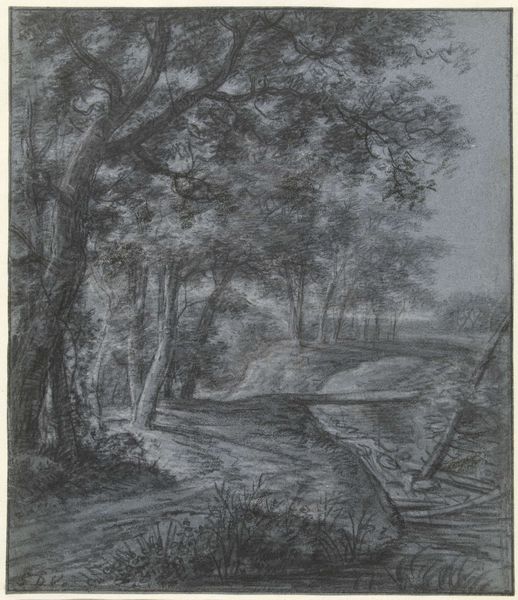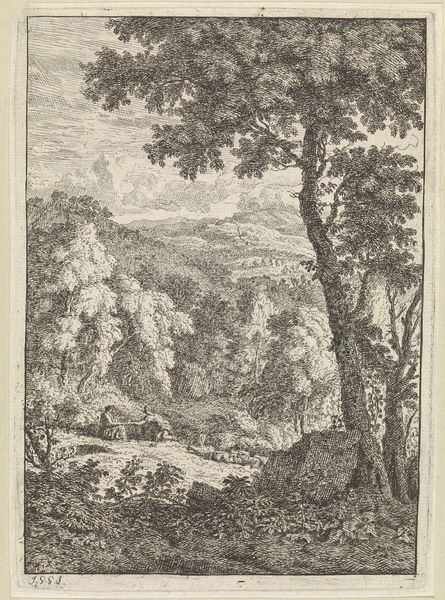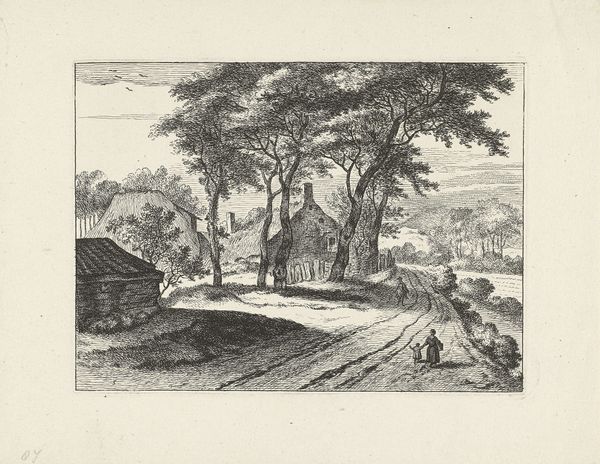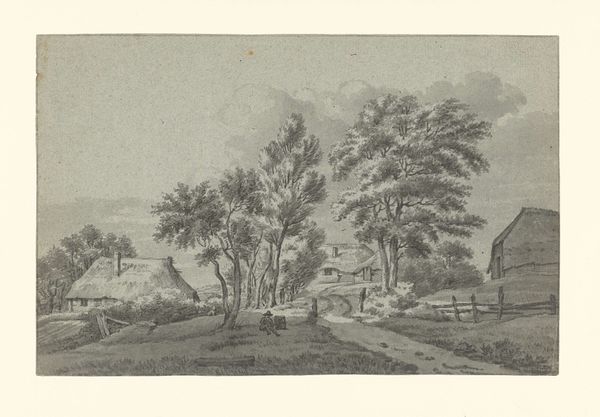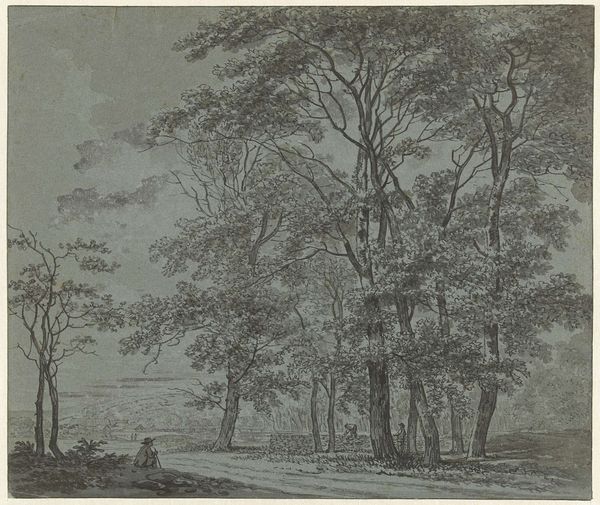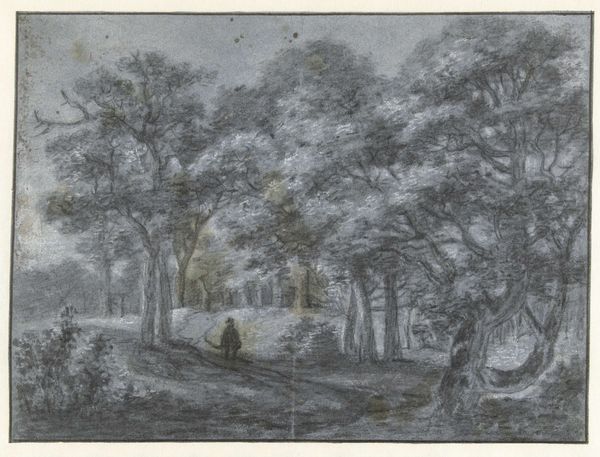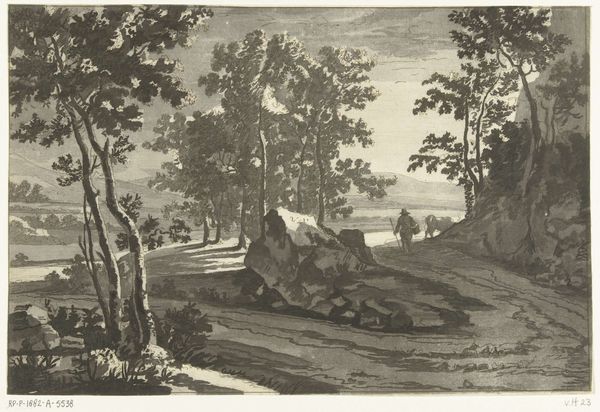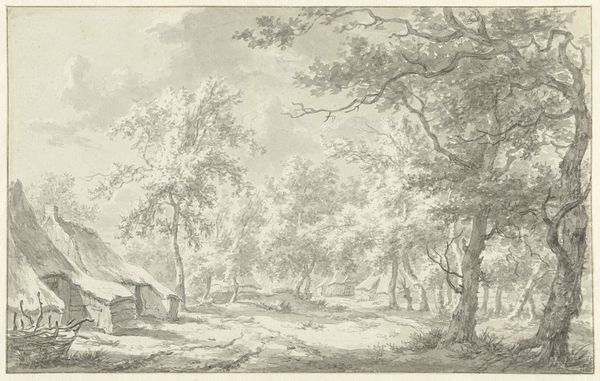
drawing, graphite, charcoal
#
drawing
#
ink painting
#
dutch-golden-age
#
pencil sketch
#
landscape
#
graphite
#
charcoal
Dimensions: height 305 mm, width 257 mm
Copyright: Rijks Museum: Open Domain
Curator: Simon de Vlieger's "Watermolen in een heuvelachtig landschap", which translates to "Watermill in a Hilly Landscape," is an enchanting charcoal and graphite drawing likely created sometime between 1610 and 1653. Editor: My first impression? It feels melancholic. The muted grays and the density of the trees give it a kind of somber, almost spectral quality. Curator: That moodiness is certainly there. It reflects a Dutch Golden Age fascination with landscape, but it’s rendered with a specific, almost pensive atmosphere. Watermills themselves often carried symbolic weight, representing human ingenuity in harmony, or sometimes in conflict, with nature's forces. Editor: Definitely seeing a tension. There’s a hierarchy at play too – the implied labor of the mill situated below a seemingly pastoral road and bridge. I wonder who this landscape is really for. Is it meant to be beautiful or functional, or to veil class divisions? Curator: Perhaps both? It speaks to the complicated relationship that Dutch society at the time had with land ownership and societal roles. Watermills were crucial, so its inclusion highlights a central node of social and economic life represented against nature. We shouldn't assume that landscape paintings weren’t political objects. Editor: And think of water itself as a symbol – here, a source of energy harnessed by technology, but also potentially a destructive force that could flood and dismantle that technology. The precarity of human intervention. Curator: Precisely! The dynamism of nature always lurked beneath the surface of the Golden Age. De Vlieger, by using grayscale tones, accentuates that ambiguity rather than resolving it in a flourish of color. It's this tension that draws you in, offering layers of contemplation rather than a simplistic view. Editor: Yes, I'm still caught by the overall mood. Even though this watermill must have been a relatively noisy place, full of sounds of industry, rendered here in charcoal it looks almost serene and deeply quiet, which, I find, is a real tension within it. Curator: It's an image full of subtleties. The stark rendering underscores a constant give-and-take of humans and nature that, ultimately, suggests transformation and endurance. Editor: It’s a landscape pregnant with social and ecological meaning, reflecting both progress and latent struggle.
Comments
No comments
Be the first to comment and join the conversation on the ultimate creative platform.
